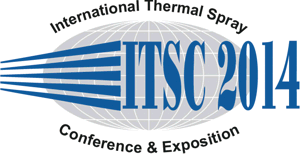
|
4165 |
|
Wednesday, May 21, 2014, Hall H1 & H2 3:47 PM "Young Professionals" |
|
Development of high efficiency flexible dye-sensitized solar cells by improving particle/substrate and inter-nanoparticle connections in vacuum cold-sprayed TiO2 photoanodes |
|
Hai-Long Yao* / State Key Laboratory for Mechanical Behaviour of Materials
Xi'an Jiaotong University, P.R. China Guan-Jun Yang / Xi'an Jiaotong University, P.R. China Cheng-Xin Li/ Xi'an Jiaotong University, P.R. China Chang-Jiu Li/ Xi'an Jiaotong University, P.R. China |
|
Flexible dye-sensitized solar cells (DSCs) using plastic substrate, which have a high energy conversion efficiency, flexibility and suitability for roll-to-roll production and low cost, have attracted great interest as an alternative to conventional Si-based solar cells. Particle/substrate connection and inter-nanoparticle connection in nano-ceramic phtoanodes play an important role in determining their properties and performance of DSCs. The particle/substrate connections can be enhanced by high temperature sintering. However, such conventional approaches are not applicable to the plastic-based flexible DSCs. In this study, mesoporous photoanodes were deposited by ultrafine nano-particles at a low temperature to aim at utilizing size-dependent deformation effect of materials to enhance the particle/substrate connections. Then, it was found that by increasing particle temperature a synergistic effect of high particle temperature and impact pressure results in further improvement in particle connections in the cold-sprayed nano-TiO2 film. The cell efficiency was increased by 40.7% from 2.7% to 3.8% through effective improvement of particle/substrate connection via impact pressure. By applying in-situ particle heating spraying and in-situ substrate heating spraying, the cell efficiency can be further increased to 5.7%. High-resolution transmission electron microscopy and Molecular dynamics simulation are conducted to reveal the particle connection and forming mechanism. Results confirmed that the effective inter-particle connection was positively associated to DSCs performance. The formation of the bonding between nano-scale ceramic particles at high velocity collision is attributed to an atomic level plastic deformation at the compacting region with the atoms displacement, which is different from the conventional viewpoint that ceramic materials are always brittle. |